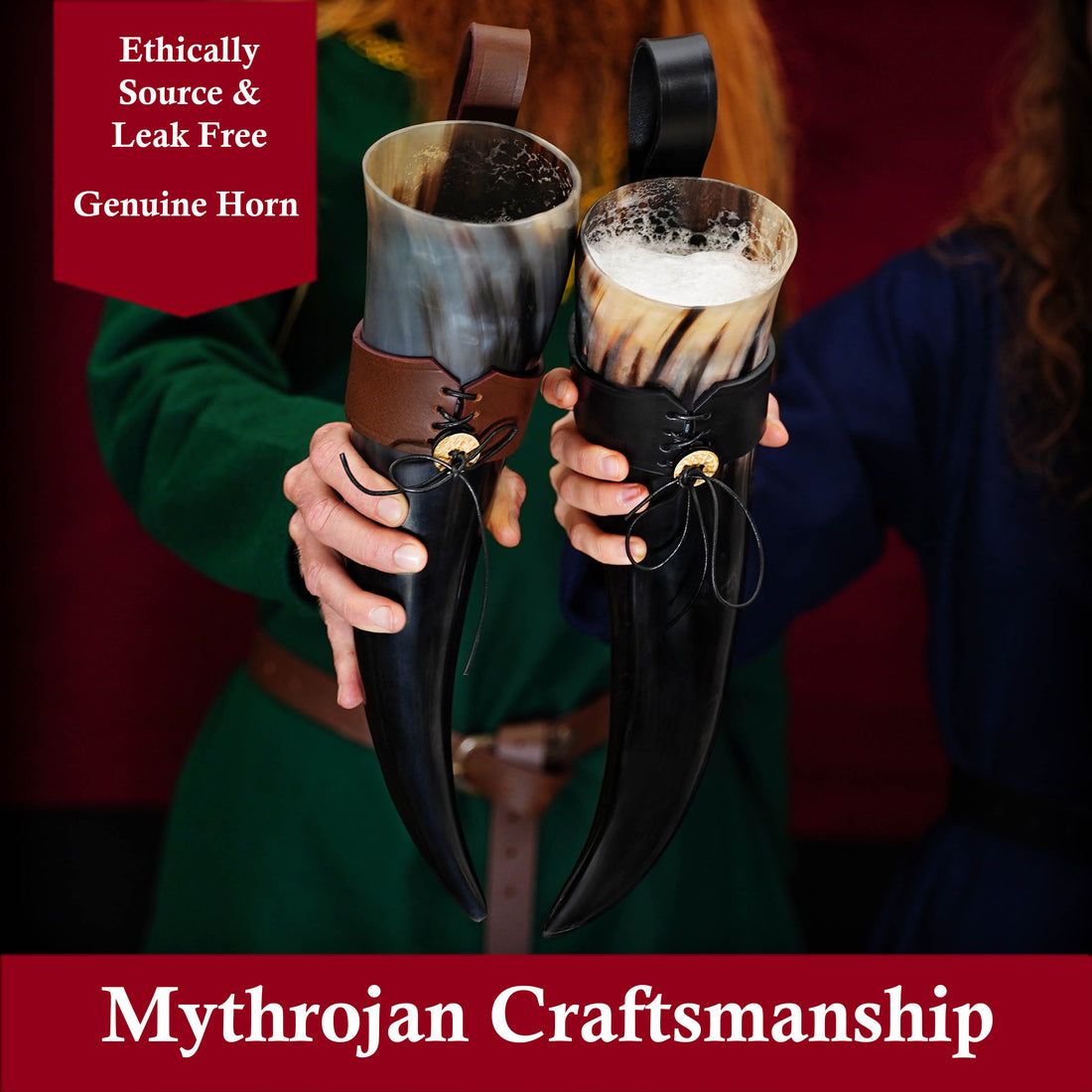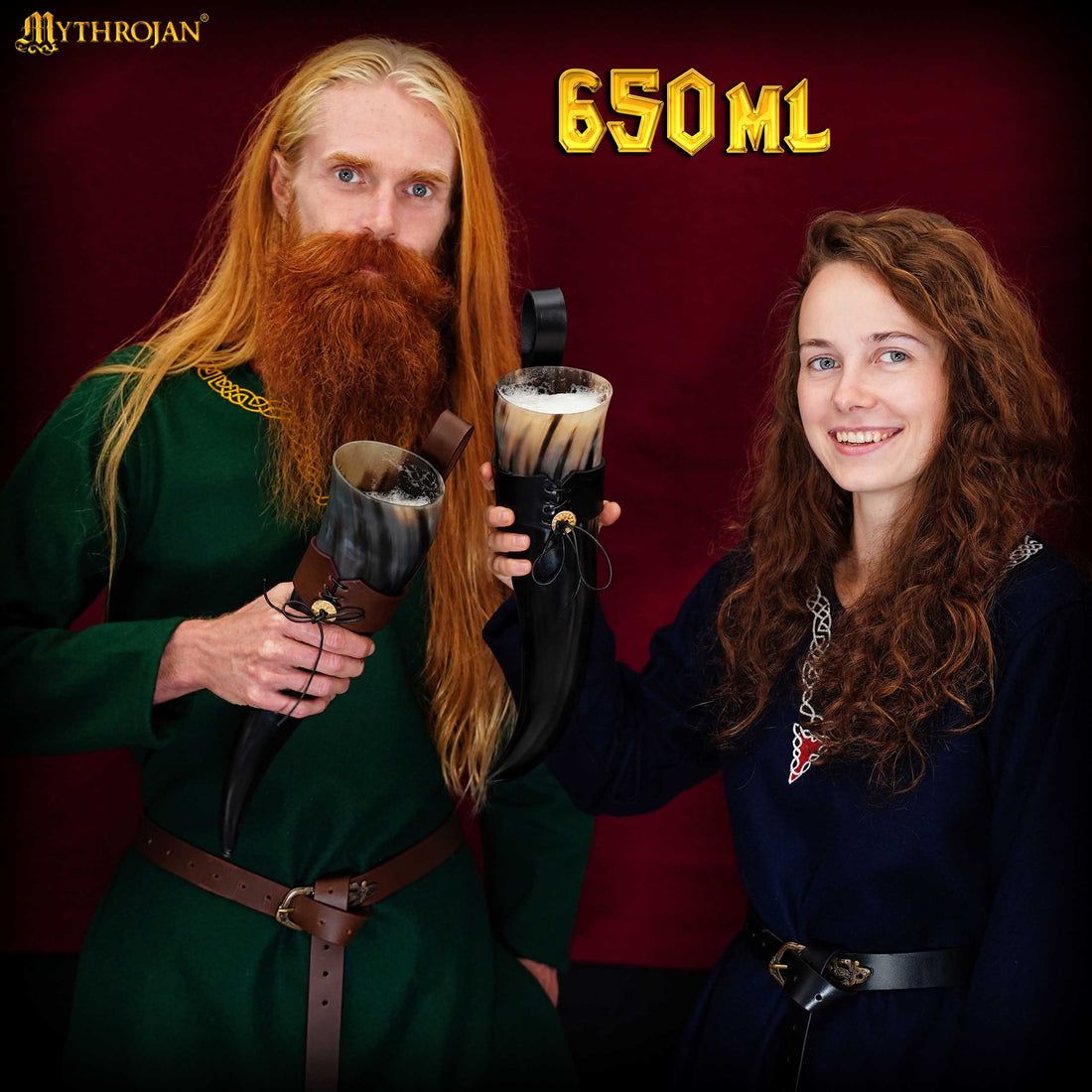
The Timeless Tradition of the Viking Drinking Horn
The Viking drinking horn is more than just a relic from history; it is a symbol of Norse culture, craftsmanship, and tradition. For centuries, these horns have been used by warriors, nobles, and common folk alike to enjoy their favorite beverages in a way that connected them to their ancestors. Whether used for mead, ale, or other drinks, a Viking drinking horn embodies the strength and spirit of the Norsemen.
The History Behind the Viking Drinking Horn
Drinking horns date back thousands of years and were used by many ancient civilizations, including the Greeks, Romans, and Celts. However, they became most famously associated with the Vikings. These Norse warriors and seafarers used drinking horns in their daily lives and for ceremonial purposes, often adorned with intricate carvings and metal embellishments. The Viking drinking horn was not just a functional item but also a status symbol, with wealthier individuals owning more ornate and decorated pieces.

Read More for Mythrojan : The Legacy of Medieval Armor Plate: A Testament to Strength and Craftsmanship
Craftsmanship and Design
Authentic drinking horns are made from real animal horns, typically sourced from cattle. The horn undergoes a meticulous process of cleaning, shaping, and polishing to ensure it is safe for drinking. Some horns are left in their natural form, while others are engraved with Viking symbols, runes, or patterns inspired by Norse mythology. The interior of the horn for drinking is often coated with a food-safe resin or beeswax to make it durable and leak-proof.
The designs can vary greatly, from simple and rustic to highly elaborate, featuring silver or brass rim embellishments. Some Viking drinking horns come with leather holders or wooden stands, making them both practical and decorative.
The Cultural Significance of Drinking Horns
For the Vikings, drinking was a communal activity, often accompanied by feasts and storytelling. Mead halls were central to Norse society, where warriors would gather to celebrate victories, share tales of heroism, and honor their gods. The horn for drinking was an integral part of these gatherings, reinforcing the bonds of brotherhood and camaraderie.
Even in modern times, drinking horns are popular among reenactors, history enthusiasts, and fans of Norse culture. They are commonly used in Viking festivals, weddings, and other themed events, allowing people to experience the traditions of the past in a tangible way.
How to Care for Your Viking Drinking Horn
Owning a drinking horn requires proper care to maintain its beauty and functionality. Here are some essential tips for maintaining your Viking drinking horn:
Hand Wash Only: Never put your drinking horn in a dishwasher, as the heat and detergents can damage it. Instead, wash it with mild soap and lukewarm water.
Dry Thoroughly: After washing, make sure to dry it completely to prevent moisture buildup and potential damage.
Avoid Extreme Temperatures: Do not expose the horn to excessive heat or cold, as it may cause cracks or warping.
Regular Conditioning: If the interior is coated with beeswax, reapply a thin layer periodically to maintain the seal.

Where to Get a Viking Drinking Horn
If you’re looking to purchase an authentic Viking drinking horn, many artisans and online stores offer handcrafted options. Visit Mythrojan.com who use ethical sourcing and high-quality craftsmanship to ensure you get a durable and beautifully designed piece. Whether for personal use or as a gift, a well-crafted drinking horn adds a touch of historical charm to any collection.
In conclusion, the Viking drinking horn is a timeless artifact that continues to capture the imagination of history lovers and Viking enthusiasts. Its rich history, intricate craftsmanship, and cultural significance make it more than just a drinking vessel—it is a link to an era of warriors, myths, and legends. If you want to experience the true spirit of the Norsemen, raising a drinking horn in celebration is the perfect way to do so!
Appreciate the creator